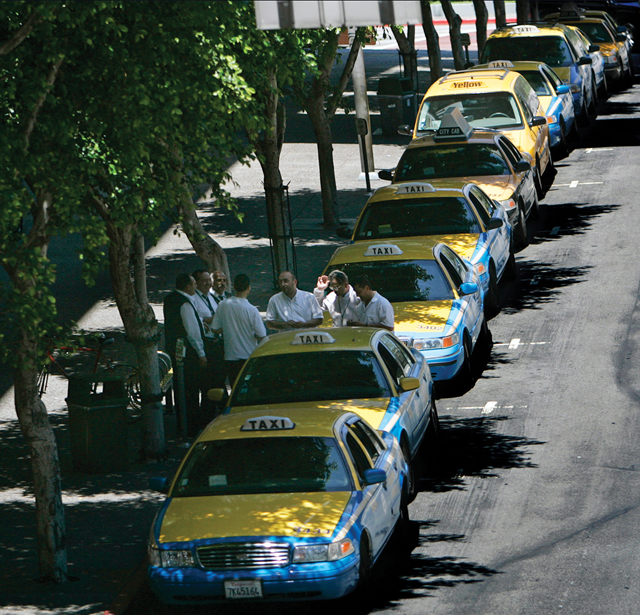As the proliferation of ridesharing continues, many regulators and legislators have called on the taxi industry to compete through innovation. This is fair — using innovation to compete is solid advice and advice that many in the taxi industry have embraced.
However, taxi companies in Los Angeles have so far been barred from pursuing a new opportunity, rooftop messaging smart screens (RMSS), that could provide $300 a month in extra income for taxi drivers facing stagnant or decreasing wages — injecting life into a floundering industry.
The taxi industry has expressed to the Los Angeles Department of Transportation its desire to carry RMSS, getting so far as a scheduled inspection before being denied the opportunity to move forward. A motion proposed by L.A. City Councilmember Bob Blumenfield in January attempts to further block this innovative opportunity by banning RMSS advertising on taxis and throughout the city.
An example of RMSS in action and its benefits can already be found on the streets of Los Angeles. Many rideshare drivers are partnering with a company called Firefly to install the devices on their vehicles. These drivers are benefitting daily from this new technology and the increased wages it provides.
This is a perfect illustration of the conundrum facing the taxi industry. This industry and the drivers themselves are trapped in a vicious cycle. They are being told by city leaders to innovate to compete, yet they are prevented from participating in opportunities to innovate and boost driver earnings.
Based on the research of UCLA professor Gary Blasi in his seminal paper, “Driving Poor: Taxi Drivers and the Regulation of the Taxi Industry in Los Angeles,” working conditions for professional drivers in Los Angeles remain bleak. Many drivers are working more than 70 hours a week, often bringing home less than minimum wage doing so, with 56% of their miles driven and hours worked going unpaid.
Making matters worse, many drivers are immigrants and heads of households already facing the struggle of establishing a life in Los Angeles, providing for their families and saving for the future. This extra $300 a month would mean an increase of more than 20% in income.
This would mean an immediate higher standard of living for drivers and their families. This wage increase also comes with no ties to driving longer hours and requires no purchase of equipment or investment of time in further training — a rare opportunity in any industry. With this opportunity, many drivers could actually end up spending less time on the road working.
My own recent economic impact study on the situation also points to the tens of millions of dollars that RMSS could bring to the L.A. market, including $16 million in primary spending by simply equipping the current taxi fleet. The impact of this stimulus would also provide an increase in direct tax revenues for the city at no additional cost.
Preventing taxi drivers from taking part in this innovation would be yet another blow to the struggling taxi industry. If this remarkable opportunity that provides benefits to both the city and taxi drivers is successfully stymied, there is no guarantee another will come behind it.
City leaders must take heed. Allowing the taxi industry to move forward with the inspection and approval of RMSS on L.A. taxis will be the helping hand the industry needs to compete. A ban on RMSS advertising would cut short an opportunity for both taxi drivers and the city itself.
Greg Autry teaches and researches entrepreneurship and technology innovation in the Lloyd Greif Center for Entrepreneurial Studies at USC’s Marshall School of Business.

